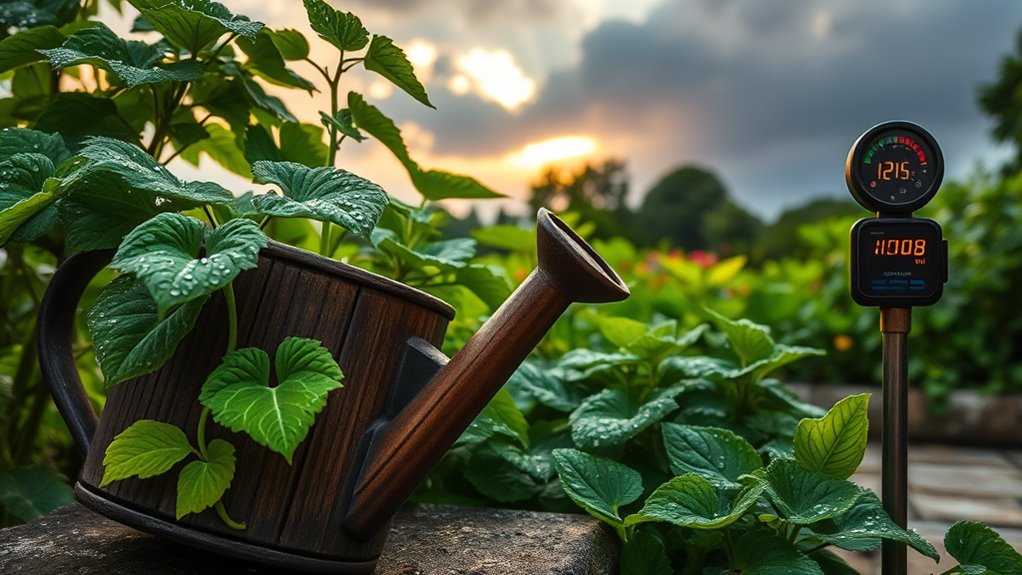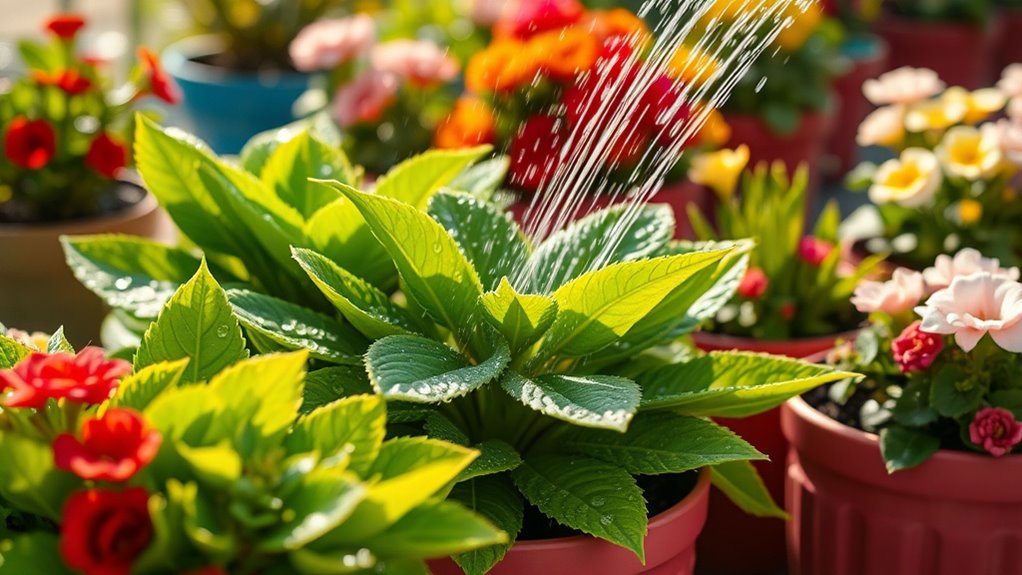When and How Much to Water Based on the Weather
Watering plants without considering the weather is like sailing without a map; you might miss key indicators. To keep your plants thriving, you’ll need to evaluate factors such as temperature fluctuations, rainfall totals, and humidity levels. Adjusting your watering routine can be a nuanced task, one that demands your attention. Understanding how these elements influence soil moisture will help you optimize hydration efforts, but where should you begin?
Understanding Plant Watering Needs
Understanding when and how much to water your plants is crucial for their overall health and vitality, especially as weather conditions fluctuate.
Establish a consistent watering schedule based on the specific needs of each plant type. Monitor soil moisture levels regularly, and adjust your schedule based on recent rainfall, humidity, and temperature to ensure optimal hydration without overwatering or underwatering. Additionally, watering during the best times of day can help minimize evaporation and improve water absorption.
Impact of Temperature on Watering Frequency
As temperatures rise, the frequency of watering your plants must adapt to prevent stress and maintain soil moisture.
Increased heat leads to faster evaporation and greater plant demand. To ensure optimal growth:
- Roots may dry out quickly.
- Plants become more susceptible to disease.
- Growth can become stunted.
- Blossoms may wilt prematurely.
Adjust your watering routine to mitigate these risks and promote healthy plants.
Adjusting for Precipitation Levels
While rainfall can temporarily alleviate the need for supplemental irrigation, it’s essential to assess the amount and timing of precipitation to determine your watering approach.
Track recent rainfall amounts to gauge soil moisture levels accurately. If over an inch has fallen in the last week, your plants may not require additional water.
Adjust your schedule based on consistent rainfall patterns to prevent overwatering. Additionally, understanding the ideal watering schedule for different plant types can help optimize your garden’s health and water usage.
The Role of Humidity in Plant Hydration
Humidity plays a crucial role in plant hydration, influencing both transpiration rates and overall water uptake.
Effective moisture levels can determine your plants’ health and growth dynamics.
- High humidity reduces water loss
- Low humidity increases evaporation
- Balanced humidity supports nutrient absorption
- Extreme conditions stress plants
Understanding these factors helps you optimize your watering strategy for healthier, thriving plants. Seasonal watering tips can further enhance your approach based on varying humidity levels.
Don’t underestimate humidity’s impact!
Creating a Seasonal Watering Schedule
Understanding how humidity impacts plant hydration helps in developing a seasonal watering schedule that adapts to changing conditions.
Analyze local climate data and monitor soil moisture levels. During warmer months, increase watering frequency, while reducing it during cooler, humid periods.
Adjust the quantity based on plant type, focusing on root needs. Regularly recalibrate your schedule based on observed plant responses and weather patterns.





